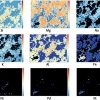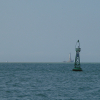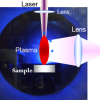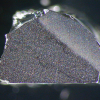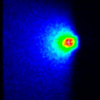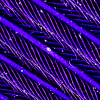Articles
Under the direction of Editor and Publisher Ian Michael, Spectroscopy Europe, and Spectroscopy World, have been writing about the latest trends in analytical sciences since 1975.
Tony considers the “Life and death of a data set: a forensic investigation”. Over time, spectral data will become increasingly fragmented and lose important supporting information. Computer and software upgrades, and processing in chemometric programs can all cause this. Of course, the answer is to follow FAIR principles and ensure that they are implemented in the analytical laboratory.
John Hammond finishes his magnum opus on “Four Generations of Quality” with a look at what is science fiction and what is science fact. He considers what may turn out to be “fact” in the future for each of the preceding eight articles in the series.
Tony Davies has started a timeline of significant spectroscopic system developments aligned with Queen Elizabeth’s reign as recently celebrated in her Platinum Jubilee. Jumping from Princess Anne the Princess Royal’s birth to Heinrich Kaiser certainly makes for a novel approach! Tony hopes that we can turn this into an online resource with your help.
Whether it is looking at geological samples to exploit potential mineral deposits, identifying the provenance of gemstones or exploring the surface of Mars, LIBS has proven to be a valuable technique. The ability to take the instrument into the field with the development of handheld spectrometers has only enhanced its utility.
Following our articles on the FAIR initiative, we now look at some examples of the FAIRification of data handling, collection and archiving.
The Tony Davies Column offers a challenge to us all with another contribution on FAIR data, which should be Findable, Available, Interoperable and Readable. It is clearly the way we should all be going, everybody from manufacturers and software developers, through researchers to publishers needs to work together.
Mike Sargent gives an overview of traceability in atomic spectroscopy. He explains the background, as well as more specialised areas such as inductively-coupled plasma mass spectrometry (ICP-MS).
How did a major trade show organiser cope with the disruption of COVID-19? Susanne Grödl, Exhibition Director of analytica for Messe München, gives her experience.
This article sets out to demonstrate the accurate determination of elemental impurities, especially As, in vitamin B12 according to USP chapter <233>.
With a wide range of concentrations of elements in potable waters, their accurate determination is difficult with ICP-MS. It is possible, using a cell-based instrument, to “tune” the signal sensitivity of particular elements and so keep all them within the dynamic range of the instrument.
A sponsored article demonstrating the ability of the Thermo Scientific™ iCAP™ PRO Series inductively coupled plasma optical emission spectroscopy instrument to determine trace elements and major components in foodstuffs to comply with regulations.
With a significant proportion of our regular readership probably under home lock-down, we were wondering if we could help you at this difficult time by pointing out some useful online resources. So, when we finally come out of this pandemic, you could do so better skilled and more up-to-date than when we went in to it.
Tony and Lutgarde Buydens give us an update on the planning for the major EuroAnalysis 2021 conference, which is being held in Nijmegen, the Netherlands, at the end of August 2021. At this stage, they are keen to gather suggestions from readers on topics they would like to see covered. Groups are also invited to consider hosting their own event under the EuroAnalysis 2021 banner.
Estuaries are where much of our marine pollution is to be found, being the gateway between the land and the ocean. They are also where much of our seafood comes. So, knowledge of elemental contamination in estuaries is vital to protect us from the ingestion of polluted seafood.
Tony Davies continues his quest to find out what you all need to work more efficiently. You will remember that in the last issue, Tony introduced his survey to discover what developments were needed in spectroscopy by readers. Some of the initial responses are explored, and Tony finds that he has opened a “can of worms”.
This article is is a fascinating look into the use of laser ablation inductively coupled plasma mass spectrometry in forensic examination of glass fragments. These are often associated with crime scenes and easily “attach” to any people near them. Thus, they can be used to link criminals to their crime and to provide information on where a glass fragment might have originated.
Another surface problem is tackled by Richard Pilkington, Stuart Astin and John Cowpe: “Application of laser-induced breakdown spectroscopy for surface hardness measurements”. Measuring the hardness of materials is not entirely straightforward, and the authors show that laser-induced breakdown spectroscopy offers the potential for in situ hardness measurements, without prior sample preparation.
Stanislav Strekopytov tells us about “The use of inductively coupled plasma mass spectrometry to quantify chemical hazards in natural history collections: arsenic and mercury in taxidermy bird specimens”. It is quite shocking to learn about the use of poisons to preserve taxidermy specimens in the past. Nowadays it is essential that the dangers from such specimens are known before they can be handled by museum staff and particularly if they might be touched by visitors. ICP-MS analysis provides fully quantitative information on bulk contents of toxic elements in taxidermy specimens and so is well suited to this task.





